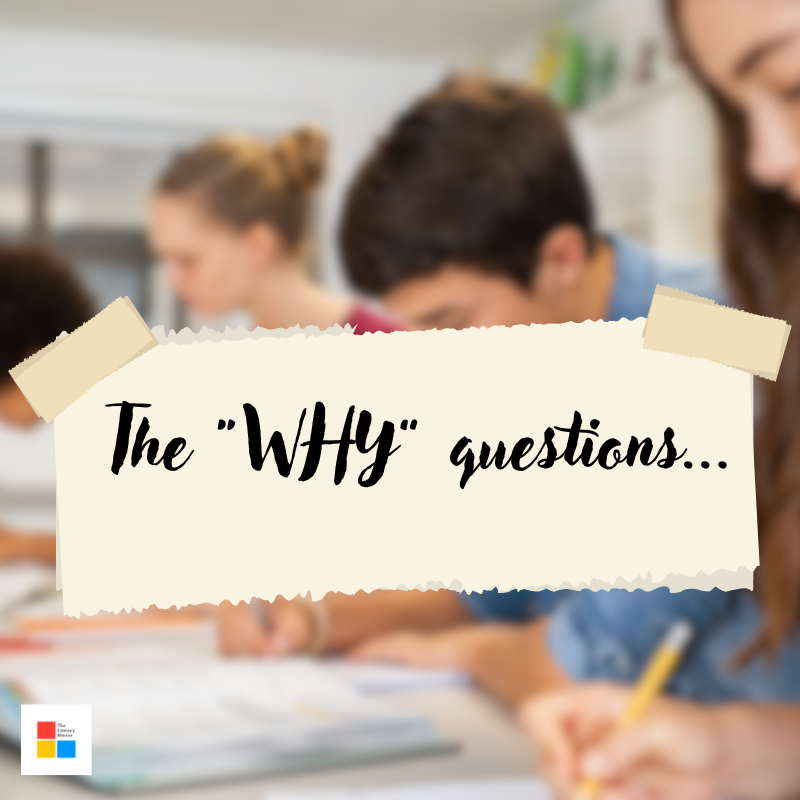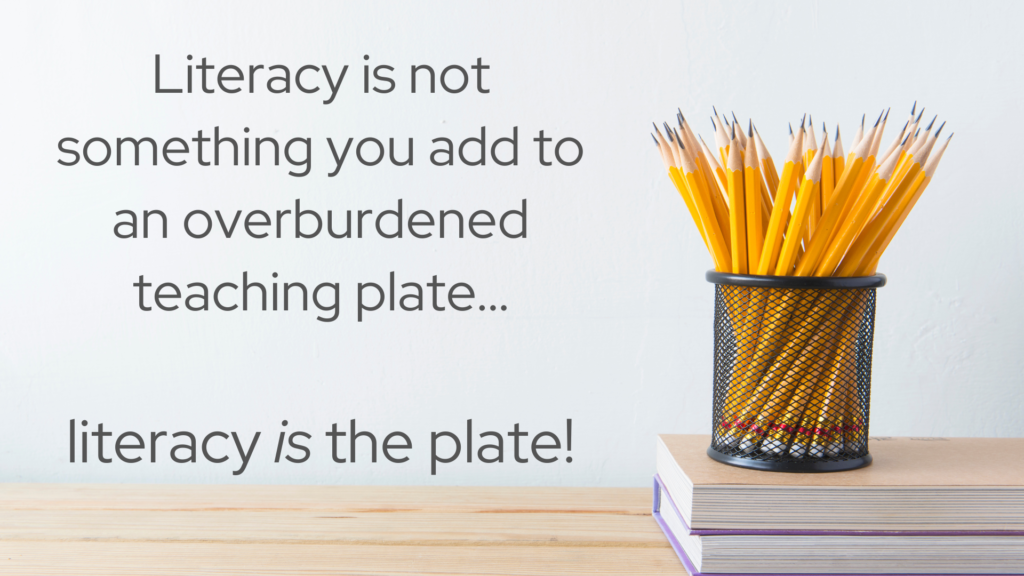
I was asked a question by a teaching friend the other day, and it definitely floored me. She asked me had I ever actually explained the ‘WHY?” behind why I do what I do to people who follow me as The Literacy Mentor?
And it got me thinking about some of the other ‘Why?” questions …
- Why I believe my resources to be effective?
- Why I believe literacy can be embedded into everyday classroom practice in the secondary environment?
- Why I prefer to design teaching resources that build comprehension skills, rather than just assess comprehension skills through a series of multiple choice questions?
- Why I emphasise the importance of scaffolding as a process, as opposed to simply providing scaffolds?
I began my permanent teaching journey at a low SES girls’ school in Sydney’s west. With an extremely high EAL/D population, this Catholic school used their Commonwealth funding to educate their teachers in genre theory, EAL/D and literary pedagogy.
My early teaching experience lit a spark in me, that I later continued through my studies at University of Technology, Sydney doing a Masters of Arts (TESOL). When I started in a literacy facilitation role, I realised that the scaffolding and explicit teaching of language features was beneficial for low ability, high ability, mainstream and EAL/D students, depending on their various needs. Another fundamental milestone in my own teaching journey was using the Teaching/Learning Cycle to plan for the development of students reading, writing and vocabulary:
- Establish Prior Learning
- Building the Field
- Modelling
- Joint Construction
- Independent Construction *
When I began facilitating a literacy project called Literacy: The Next Step, and started running action research projects for a range of KLAs (English, HSIE, Science, CAPA, TAS, PDHPE), I worked with an expert team and together we helped small groups of teachers, mentoring them to plan a sequence of literacy lessons using the Teaching/Learning Cycle. The transformation that I witnessed in teachers was undeniable, as they explicitly assessed their students reading and writing skills, and then implemented a scaffolded teaching sequence to develop these skills. Feedback from teachers was that it was one of the best PD that they had ever done. In addition, to 4 course days, teachers were supported by project advisers in the school for 4 days. Due to the nature of the action research, we had data to prove that the targeted language features and skills improved through this process.
And when I returned to a school environment, I continued working with staff, individually, in KLAS and whole school, to build collective capacity. I also worked with students and in the classroom, but my underlying belief is that if I can model effective literacy practices to one history teacher then that is 30 history students that benefit. The same in English, science, religion, maths, business studies, art and so on.
And the underlying WHY remains the same …
- because it works
- because all students benefit from ‘high challenge, high support’ **
- because there is a difference between providing a scaffold of a narrative, and actually scaffolding the language features and structure required to write a narrative successfully
- because simply providing a jumbled up text, does not effectively build sequencing and reading skills, but providing support around understanding time/sequence language, context clues and referring words does build these skills
- because there is a difference between assessing reading comprehension skills and actually teaching students how to develop the skills of an effective reader eg how to predict, question, visualise, connect, summarise and monitor
- because literacy is not something you add to an already crowded plate; literacy is the plate … and the key to our students achieving success in the outside world.
Felicity
aka The Literacy Mentorr

References:
* Derewianka, B. and Jones, P. (2016). Teaching Language in Context. South Melbourne, Victoria: Oxford University Press.
**Gibbons, P (2009), English Learners Academic Literacy and Thinking: Learning in the Challenge Zone. Portsmouth, NH: Heinemann.
